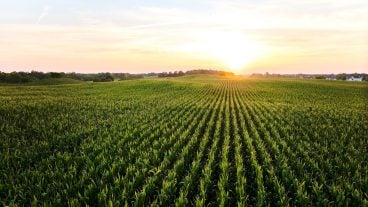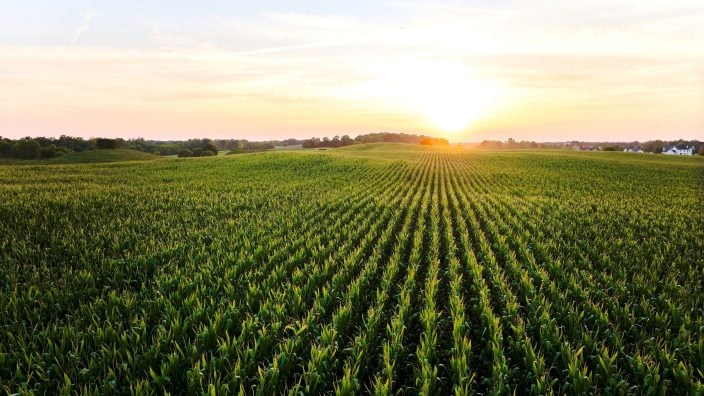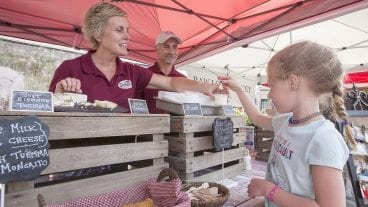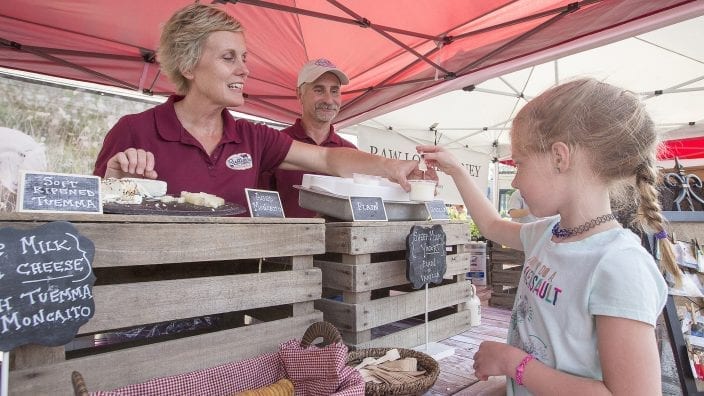Farmer’s Guide to Trucking Regulations available to Ohio Farm Bureau members
The guide includes a farm driver checklist, overview of state and federal regulations and exemptions, CDL qualifications and more.
Read More
With the beautiful weather on Sunday and not having a drop of Irish blood in my veins, I decided to spend the first nice (but chilly) day of spring outside.
I even managed to finish all my grading and schoolwork during the two-hour early dismissal that marked the end of the third nine weeks that Maplewood was graced with on Friday. When I strolled out of school on Friday, I had an entire weekend in front of me that appeared to be free. However, viewing my home in the waning hours of daylight made me reconsider my lounging-around-my-house Saturday plans. Somewhere, somehow, in all my cleanliness, the dust fairies had sprinkled their magic across every surface in my house.
Unfortunately (or fortunately) I am one of those people that when I see dirt or a mess, I instantly need to remedy the situation. Therefore, most of Saturday, with the exception of a few hours in the woods with my dog, Bella, was spent inside cleaning everything until the whole house smelled of lemon.
On Sunday, with my lack of Irish heritage, my cleaning spree began to move outside. Last year I realized midway through the summer that I had a beautiful row of grapes that produced prolific grapes but were interspersed with briar bushes of death. Now, if briar bushes of death are a new concept for you, let me explain.
There are three types of briar bushes. The first type of briar bushes are considered raspberry and blackberry bushes; I refer to these as the youchies. First, yes, youchies is a made-up word. (Cut me a little slack for a moment. I have a doctorate, and I teach English. I am allowed to make up a word here and there.) Youchie briars are where the thorn hurts for just a moment, but then there is a sweet reward at the end. In the case of blackberries and raspberries, that sweet reward is that juicy, succulent berry that tastes like sunshine and heaven and makes the fleeting pain of the thorn disappear.
The second type of briar is the darn briar. This briar is more annoying that painful; it barely manages to stick you through a pair of jeans or catches your arm just enough for you to yell darn or a more colorful adjective. It really doesn’t serve a purpose other than to remind you to slow down and pay attention to avoid more darn briars.
Last is the briar of death. This, too, features made-up words; however, for the sake of young ears and modest readers, these words shall not be published. Let’s just say, if you get caught by one of these briars, your language might make a sailor blush. These briars are the ones that have been growing for years simply because they are too big, too mean and too painful for someone to brave cutting them down. These briars have at least an inch stem and thorns that could double as lethal weapons in every state. When these thorns poke you, colorful language emerges, immediately followed by drops of blood from the poked spot. Hours later, that tiny, almost invisible spot is still painful.
Well, my beautiful and bountiful grape arbor contained briars of death and Sunday was the day I decided to tackle these monsters. Armed with cutting tools and a coat, I ventured into the thicket, cutting, pulling, cussing and yanking my way through the morass. Eventually, I emerged the victor but not without a few painful moments, colorful words and more blood than I cared to admit.
Later Sunday night, as I wrote this article, I still had a few painful reminders in my fingers from the briars of death. It made me think about how obstacles we encounter in life can be related to these three types of briars. Some obstacles are painful but result in a sweet end. Other obstacles are more annoying and remind us to pay attention; while some obstacles create more damage and linger longer. The important thing is that spring and the season of growth reminds us that life is beautiful, even with the thorns.
Submitted by Christen Clemson, a member of the Trumbull County Farm Bureau, who completed her doctorate at the Pennsylvania State University. She and her family farm in Mecca Township.
OFBF Mission: Working together for Ohio farmers to advance agriculture and strengthen our communities.


The guide includes a farm driver checklist, overview of state and federal regulations and exemptions, CDL qualifications and more.
Read More


Ohio Farm Bureau provides opportunities, platforms and resources to help you develop your voice in the industry and give farmers a seat at the table with leaders and legislators.
Read More

The emergency fuel waiver to allow the sale of summer gasoline blends containing 15% ethanol will lengthen the period during which Americans can continue buying E15 from June 1 to Sept. 15.
Read More

The Small-Scale Food Business Guide covers federal and state regulations for selling food products such as raw meat, dairy, eggs, baked goods, cottage foods, fruits and vegetables, honey and more.
Read More

New resources and technology are broadening the different types of sales tools and strategies available to farmers.
Read More

ODA will enroll 500,000 acres into the program for a two-week sign-up period, beginning April 22, 2024, through May 6, 2024. Contact local SWCD offices to apply.
Read More

Katie Share of Columbus has been named ExploreAg and Youth Development Specialist for Ohio Farm Bureau.
Read More

Mary Klopfenstein of Delphos has been named Young Ag Professional and Ag Literacy Program Specialist for Ohio Farm Bureau.
Read More

The plan has been updated to give sole proprietors access to more rate stability and a smart solution that offers potential savings on health care.
Read More

The American Farm Bureau Federation, in partnership with Farm Credit, is seeking entrepreneurs to apply online by June 15 for the 2025 Farm Bureau Ag Innovation Challenge.
Read More